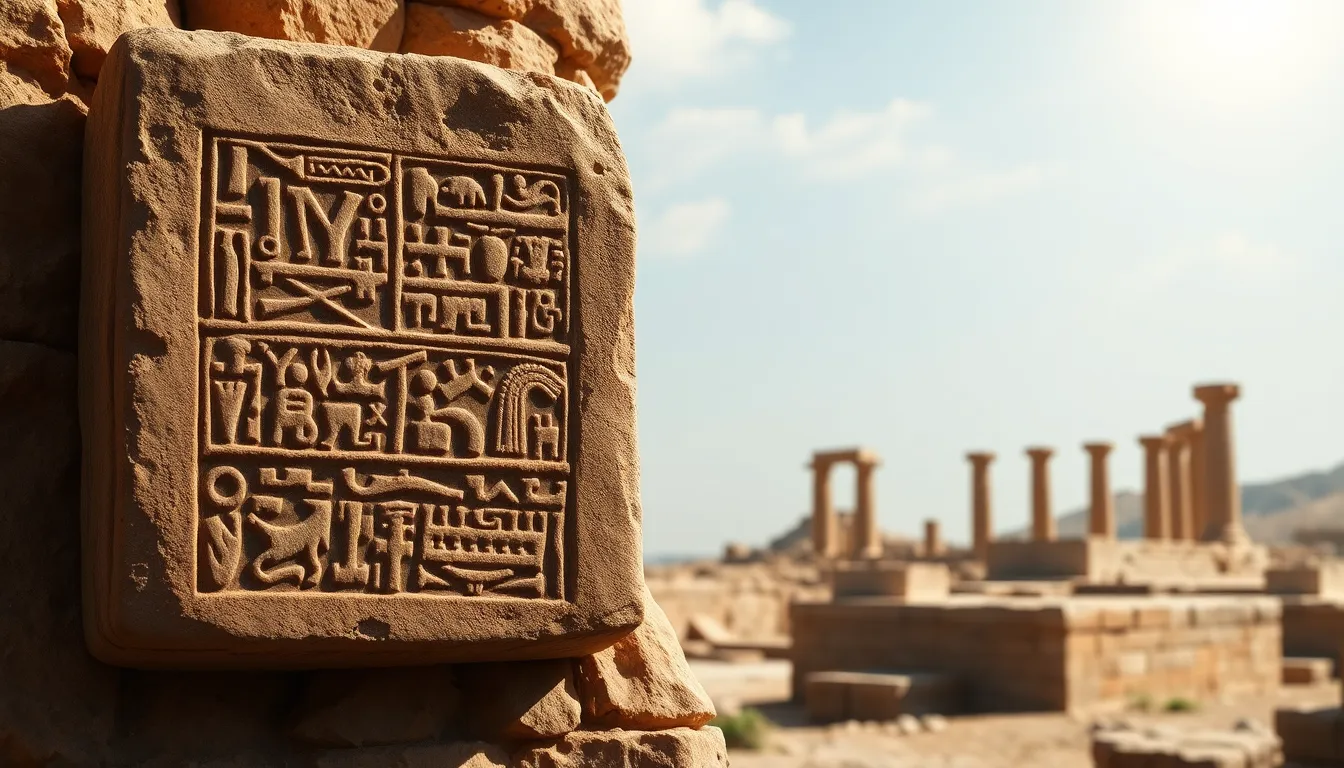Imagine chatting with your friends in a language so ancient it could practically have its own museum exhibit. The quest to uncover the world’s oldest language is like a linguistic treasure hunt, filled with fascinating twists and turns. From the dusty scrolls of Sumerian to the melodic whispers of Tamil, each contender has its own story to tell.
Table of Contents
ToggleOverview of Idioma Mas Viejo Del Mundo
Identifying the oldest language in the world is a complex endeavor. Linguists frequently reference Sumerian as one of the earliest written languages, dating back to around 3100 BC. This ancient language emerged in Mesopotamia and utilized cuneiform script for documentation.
Tamil, another candidate, claims a continuous existence for over 2,000 years. It possesses a rich literary tradition and is still spoken by millions in contemporary societies. Evidence of Tamil literature dates back to the 3rd century BC, showcasing its historical significance.
Research often highlights Egyptian as a contender due to its ancient hieroglyphics. These writings appeared around the same time as Sumerian scripts. Egyptian language underwent several stages, providing insights into its evolution and influence on subsequent languages.
Another ancient language, Hebrew, dates back to approximately 1000 BC. It holds religious importance within Judaism and has evolved through centuries, influencing numerous modern languages.
Further analysis points toward Chinese, which boasts over 3,000 years of written history. Written Chinese developed through different script forms, contributing significantly to East Asian cultures. This development showcases the language’s ability to adapt while retaining its core structure.
Exploring these languages uncovers connections among them. Each has played a crucial role in shaping culture and communication methods across civilizations. Ongoing research continues to uncover historical context and linguistic evolution, emphasizing the complexity of tracing language origins.
Examining these ancient languages not only reveals their history but also highlights humanity’s quest for communication and connection throughout time.
Historical Significance


Identifying the world’s oldest language provides insight into human communication and cultural foundations. Exploring ancient languages reveals their immense impact on society.
Origins of the Language
Sumerian emerged around 3100 BC, originating in Mesopotamia as one of the earliest written languages. Early cuneiform scripts documented economic transactions, administrative matters, and religious texts. Linguists regard Sumerian as a language isolate, meaning it lacks a known relationship to any existing language. Tamil’s origins trace back more than 2,000 years, showcasing a continuous literary tradition and rich cultural heritage. Its inscriptions and texts reflect societal values and historical events from ancient Tamil civilization.
Evolution Through Time
Languages evolve, adapting to cultural and societal changes. Sumerian gradually transitioned to Akkadian, shaping the linguistic landscape of ancient Mesopotamia. This adaptation marked significant shifts in communication and record-keeping practices. Tamil’s evolution preserved its core elements while incorporating influences from various languages and cultures. Over centuries, it maintained relevance, adapting grammar, vocabulary, and literary styles while still being spoken by millions today. Egyptian hieroglyphics, another example, transformed into Coptic, showcasing the gradual progression and adaptation of language forms throughout history.
Characteristics of the Language
Languages like Sumerian and Tamil possess distinct characteristics that showcase their unique attributes.
Phonetics and Syntax
Sumerian features a complex phonetic system that includes various vowel and consonant sounds. Its syntax, characterized by a subject-object-verb structure, influences how sentences are constructed. Sentence patterns often involve modifiers placed before the nouns they describe, revealing the language’s unique approach to sentence organization. Tamil, on the other hand, uses a similar subject-object-verb order but allows for greater flexibility in sentence construction. Vowel harmony further enhances Tamil’s phonetic landscape, leading to distinct pronunciations that can convey different meanings based on tonal variations.
Unique Vocabulary
Sumerian boasts a vast vocabulary with many words dedicated to economic and administrative concepts, reflecting the culture’s priorities. Specific terms relate to agriculture, trade, and governance, showcasing ancient societal structures. Tamil contains ancient words that express deep cultural significance, often connected to spiritual or philosophical ideas. The language’s unique vocabulary enables speakers to convey intricate thoughts and emotions, with some words carrying multiple meanings that reflect rich historical contexts. Both languages reveal how vocabulary can provide insight into the values and societal priorities of their respective civilizations.
Cultural Impact
Understanding the cultural impact of ancient languages like Sumerian and Tamil reveals their profound significance in human history. These languages shape communication and cultural exchange, influencing countless generations.
Influence on Modern Languages
Sumerian and Tamil laid the groundwork for many modern languages. Various linguistic structures and vocabulary in contemporary languages can trace their roots back to these ancient tongues. For instance, Tamil’s rich vocabulary continues to influence languages in South Asia, while Sumerian’s script development informed the creation of other writing systems. Additionally, the grammatical frameworks established by these languages serve as foundational components for numerous linguistic families, reinforcing the interconnectedness of language evolution.
Preservation Efforts
Preserving ancient languages remains a critical endeavor. Efforts include documenting the inscriptions and texts from historic sites, thereby making resources available for study. Scholars actively engage in translating and teaching Sumerian and Tamil to preserve their legacies. Furthermore, cultural organizations promote the importance of these languages in fostering identity and heritage. Such initiatives enhance the linguistic diversity and cultural richness in communities around the world.
Challenges in Research
Identifying the world’s oldest language poses significant challenges for linguists and researchers. Determining the origins and development of languages like Sumerian and Tamil requires careful analysis of ancient texts and inscriptions. Verification of dating techniques complicates this process; accurately dating artifacts can lead to disputes about linguistic timelines.
Research methods often encounter another hurdle due to the availability of historical records. Sumerian language artifacts offer limited insights without sufficient context, while Tamil inscriptions present their own challenges regarding interpretation. Researchers must rely on interdisciplinary collaboration, incorporating archaeology, anthropology, and linguistics to build a more comprehensive understanding.
Another issue arises from language evolution. As languages naturally change over time, distinguishing earlier forms from later developments proves difficult. Researchers might face confusion regarding what constitutes a distinct language versus a dialect within a language family. This complexity often leads to disagreements among scholars on classification.
The lack of written records for many ancient languages further compounds these challenges. Languages like Proto-Semitic, which likely influenced Hebrew, lack direct evidence, making reconstruction speculative. Such uncertainties can impede definitive conclusions about language lineage.
Additionally, cultural biases can affect interpretations of ancient languages. Researchers sometimes impose contemporary perspectives on ancient societies, misrepresenting the context and significance of linguistic attributes. This misunderstanding can distort the historical narrative attached to a language.
These challenges illustrate the complexities of tracing the origins of the world’s oldest languages. Continuous advancements in technology and methodologies provide new avenues for research, assisting scholars in navigating these intricate linguistic landscapes.





